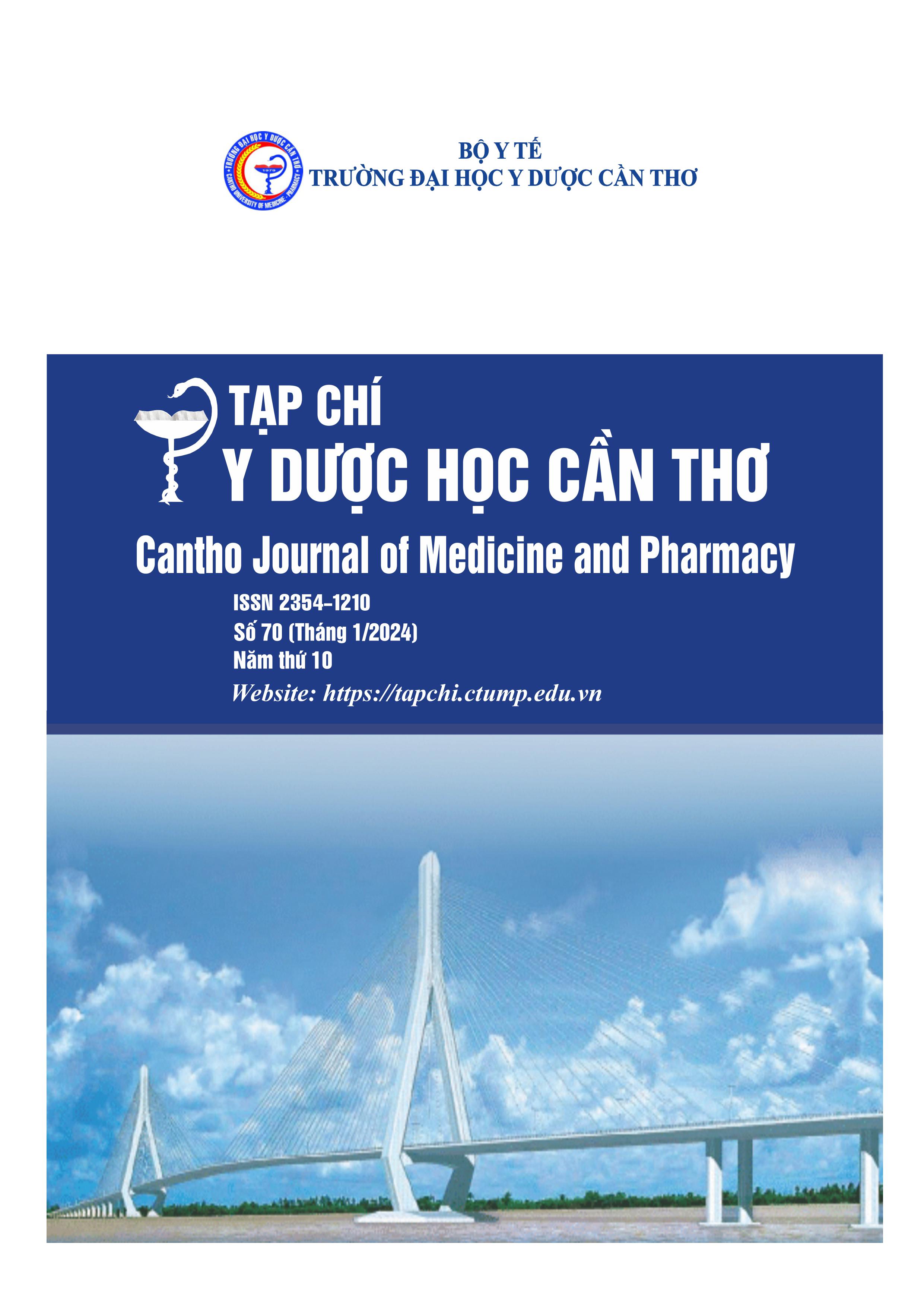STUDY ON DRUG RELATED PROBLEMS OF NON-STEROIDAL ANTI-INFLAMMATORY DRUGS USED IN INPATIENT TREATMENT IN A DEPARTMENT AT CAN THO UNIVERSITY OF MEDICINE AND PHARMACY HOSPITAL IN 2022 – 2023
Main Article Content
Abstract
Background: During treatment with drugs, Drug Related Problems - DRP may appear and be harmful to the patient's health, costly and cause treatment failure. Many studies indicate that non-steroidal anti-inflammatory drugs (NSAID) are among the most popular drugs causing DRP. Objective: Investigate the characteristics of using NSAID and determine the incidence of DRP of NSAID in a department at Can Tho University of Medicine and Pharmacy Hospital in 2022-2023. Materials and methods: A cross-sectional descriptive study on 254 medical records of inpatient treatment using NSAID in the Traumatology and Orthopaedics Department at Can Tho University of Medicine and Pharmacy Hospital during 09/2022 – 02/2023. Results: The proportion of men in the study was higher than that of women (57.5%). The majority of patients were in the age group of under 60 years old (69.7%). The average of length of hospital stay was 6 ± 3.3 days. Diclofenac had the highest use rate (86.5%) and the lowest was meloxicam (0.8%). The rate of using NSAID by injection was 44.4% and for oral route was 55.6%. The incidence DRP was 19.7%, with average 1.7 DRP/ medical record. DRP on drug interactions between NSAID and other drugs accounted for the highest rate (48.2%) and the lowest was treatment without adequate prevention (2.4%). Conclusion: Research shows that DRP of NSAID still occurs in a certain proportion, determination and classification of DRP can help implement measures to prevent DRP in the future.
Article Details
Keywords
Non-steroidal anti-inflammatory drugs, drug related problems, inpatient patient
References
2. Garin N., Sole N. Drug Related Problems in Clinical Practice: A Cross-Sectional Study on Their Prevalence, Risk Factors and Associated Pharmaceutical Interventions, Scientific Reports. 2021. 11 (1), 1-11. doi: 10.1038/s41598-020-80560-2.
3. Foppe van Mil. Drug-related problem a cornerstone for pharmaceutical care, Journal of the Malta College of Pharmacy Practice. 2019. 10, 1-4.
4. Samik Bindu. Non-steroidal anti-inflammatory drugs (NSAIDs) and organ damage: A current perspective, Biochemical Pharmacology. 2020. 180, 1-7.
5. Xiao-Feng Ni. Drug-Related Problems of Patients in Primary Health Care Institutions: A Systematic Review, Frontiers in Pharmacology. 2021. 12, 1-12, doi: 10.3389/fphar.2021.698907. 6. Matveev. Application of Drug-Related Problems Approach to Analysis of Non-Steroidal AntiInflammatory Drugs’ Safety, Pharmacy & Pharmacology. 2019. 7 (4), 215-223. DOI:10.19163/2307-9266-2019-7-4-215-223.
7. Neupane Ganesh Prasad, Maya Rai, Poojan Kumar Rokaya. Patterns of prescription and adverse drug reaction profile of Non- Steroidal Anti-Inflammatory Drugs at orthopedic out-patients department, Nepal Med Coll J. 2022. 24 (2), 170-175. doi:10.3126/nmcj.v24i2.46045.
8. Hoàng Thị Ngọc Thu. Nghiên cứu tình hình sử dụng thuốc giảm đau kháng viêm không steroid trong điều trị một số bệnh cơ xương khớp và đánh giá tính hợp lý theo mức độ nguy cơ trên tiêu hóa – tim mạch tại bênh viện Trường Đại hoc Y dược Cần Thơ năm 2021, Tạp chí Y Dược học Cần Thơ. 2022. 54, 55 – 63. https://doi.org/10.58490/ctump.2022i54.358.
9. Đỗ Thị Phương Dung. Khảo sát tình hình sử dụng thuốc chống viêm không steroid tại bệnh viện Đa khoa Đồng Nai, Tạp chí Y học Việt Nam. 2019. 475, 67-72.
10. Nguyễn Minh Tuấn. Khảo sát tình hình sử dụng thuốc giảm đau, chống viêm không Steroid (NSAIDs) trên bệnh nhân điều trị nội tại Khoa Khớp - Bệnh viện Quân y 103 năm 2019, Tạp chí Nội khoa Việt Nam. 2019. 21, 83 – 89.
11. Nguyễn Thị Hải Yến. Khảo sát tình hình kê đơn thuốc giảm đau, chống viêm không steroid (NSAIDs) trên bệnh nhân xương khớp ngoại trú tại Bệnh viện Trung ương Quân đội 108 năm 2021, Tạp Chí Y Dược Lâm Sàng 108. 2022. 6, 27 – 35. doi: https://doi.org/10.52389/ydls.v17i6.1383.


